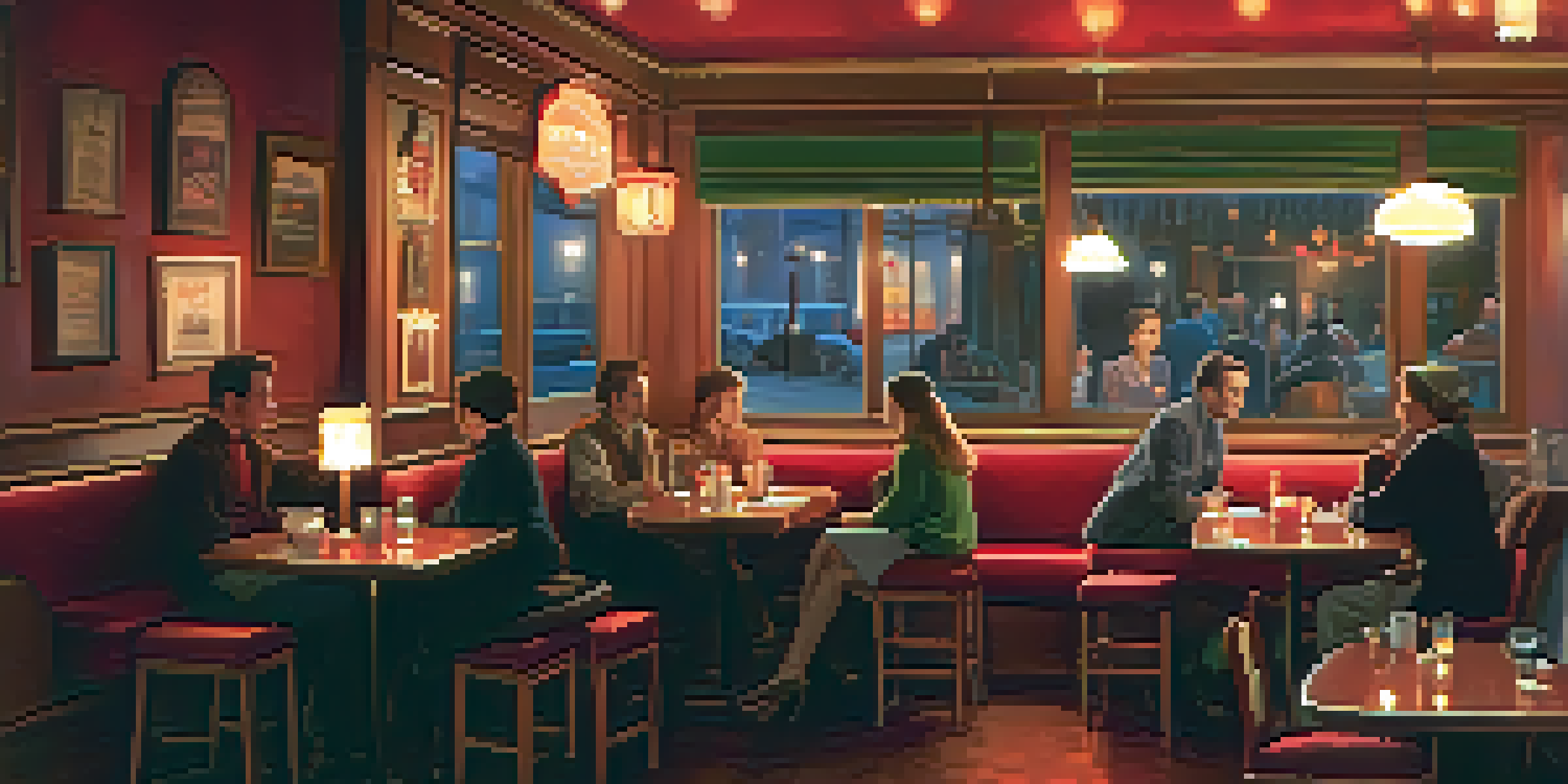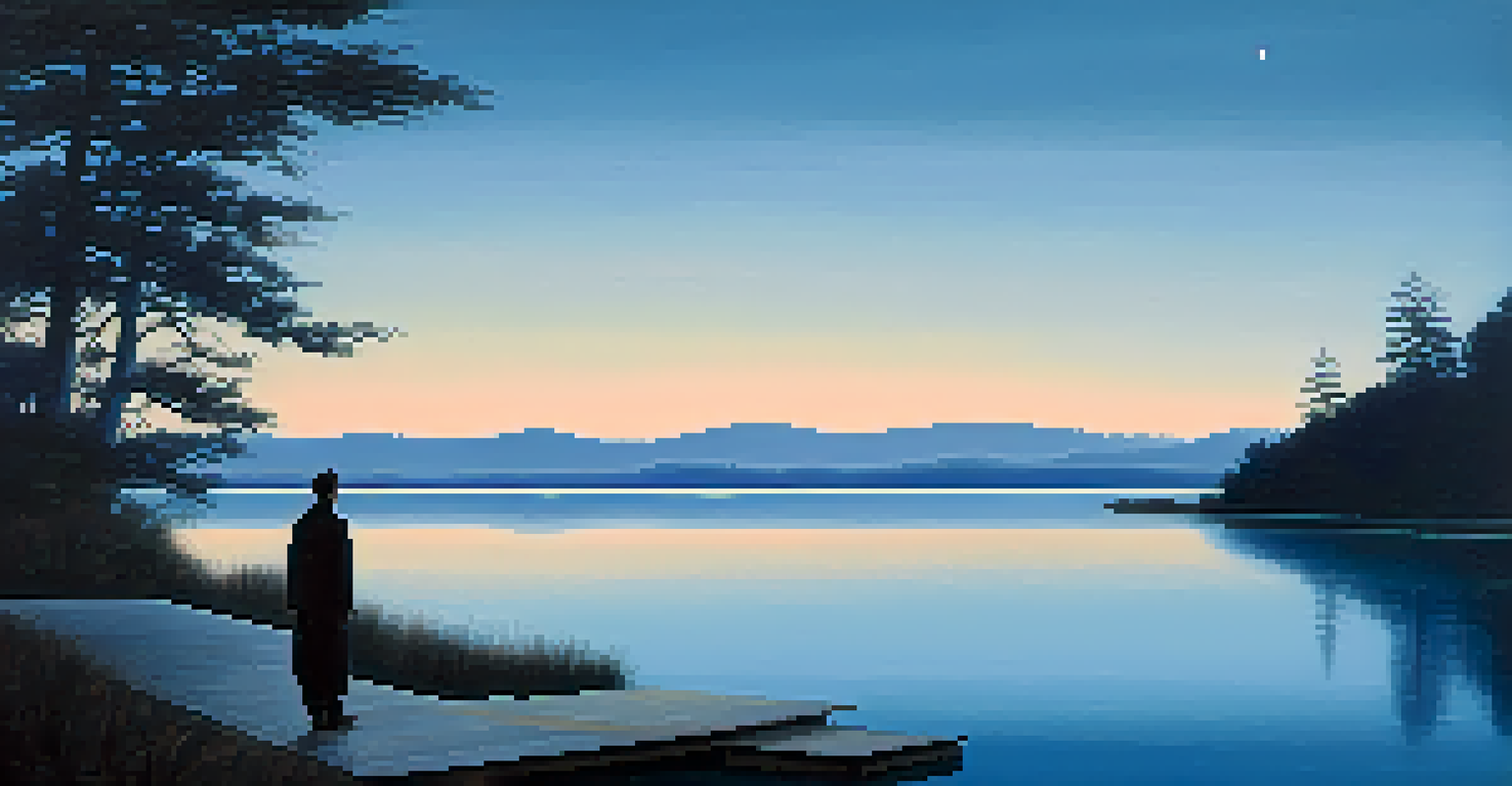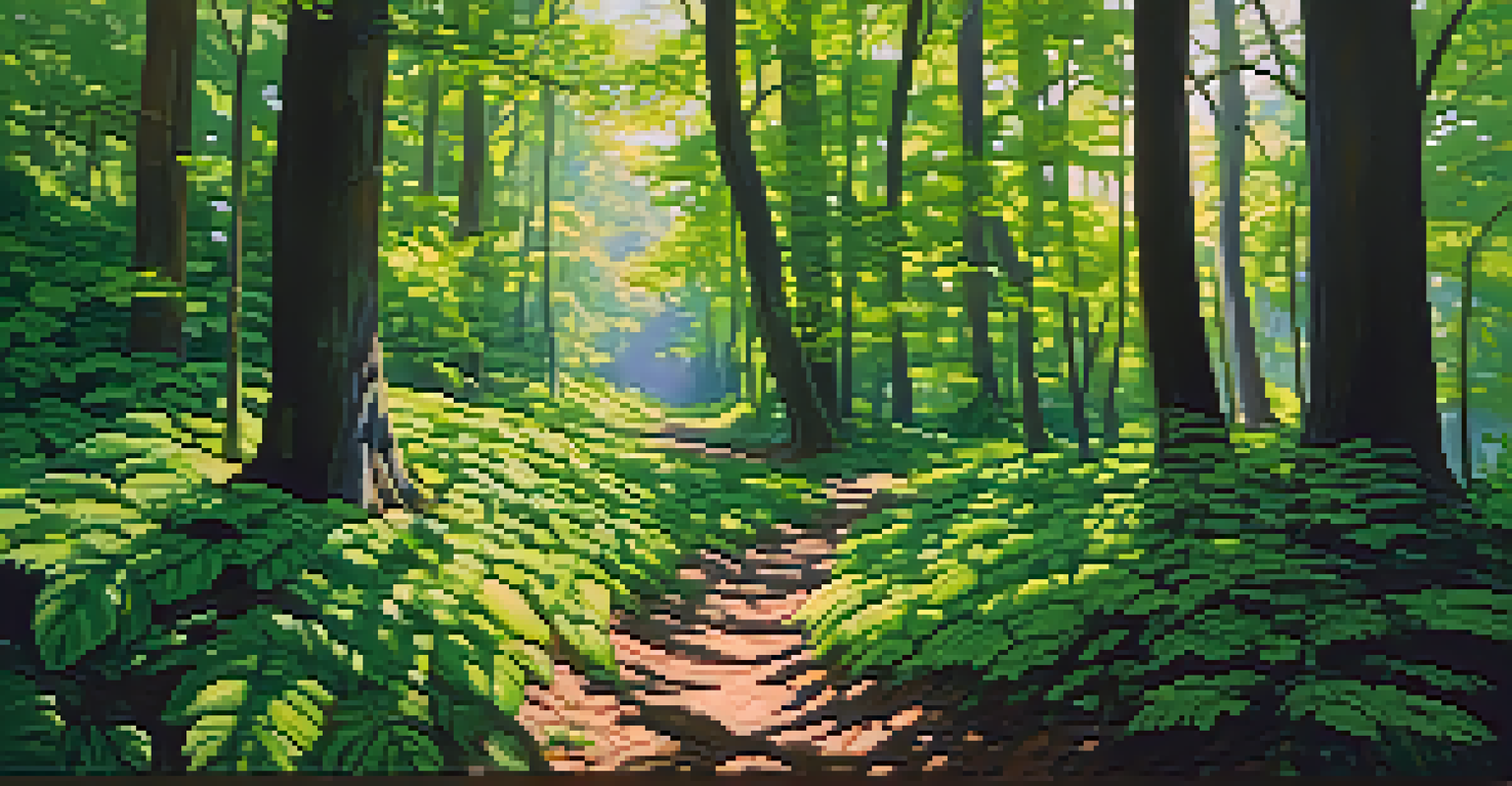Symbolism of Colors in Classic Films: A Deep Dive Analysis

The Power of Color in Film: An Introduction
Colors in film are more than just visual elements; they evoke emotions and convey themes. From the vibrant reds of passion to the somber blues of sadness, filmmakers use color strategically to enhance storytelling. Classic films often relied on color symbolism to communicate complex ideas without words, creating an immersive experience for the audience.
Color is the keyboard, the eyes are the harmonies, the soul is the piano with many strings.
For instance, consider the use of color in Alfred Hitchcock's 'Vertigo.' The haunting greens represent obsession and mystery, guiding viewers through the protagonist's psychological turmoil. By the end of the film, these colors linger in our minds, enhancing our emotional response and understanding of the narrative.
Ultimately, the symbolism of colors can transform a simple movie into a rich tapestry of meaning, inviting viewers to explore layers of interpretation. This article will delve into specific examples from classic films, revealing how color choices shape our perception and deepen our engagement with the stories.
Red: Love, Passion, and Danger
Red is a color that often pulsates with energy, symbolizing love, passion, and even danger. In classic films, it frequently appears during pivotal moments, capturing the intensity of human emotions. For example, in 'Casablanca,' the iconic red lighting of Rick's Café highlights the romantic tensions and the bittersweet nature of love.

Moreover, red can also signify danger or impending doom. In 'The Sixth Sense,' the color red is used to indicate supernatural elements and moments of suspense, alerting viewers to something significant. This duality keeps the audience on edge, using color to guide their emotional responses throughout the film.
Colors Enhance Film Storytelling
Filmmakers strategically use color to evoke emotions and convey themes, transforming narratives into rich tapestries of meaning.
Through these varied uses, red becomes a compelling tool in the filmmaker's palette, illustrating how different contexts can alter its meaning. The power of red lies in its ability to evoke strong feelings, making it a favorite among directors aiming to convey deep emotional arcs.
Blue: Melancholy and Reflection
Blue often evokes feelings of calmness, but in cinema, it frequently represents melancholy and introspection. Classic films like 'The Great Gatsby' utilize blue to underscore themes of longing and unfulfilled dreams. The blue hue in Gatsby's mansion reflects his desire for a past love, creating a poignant atmosphere.
The only thing worse than being talked about is not being talked about.
Directors use blue to create a sense of distance or isolation. In 'The Graduate,' the cool blue tones during scenes of disconnection enhance the protagonist's feeling of being lost and adrift. This visual cue helps audiences empathize with the character's internal struggles.
Thus, blue acts as both a soothing and stirring force in classic films, allowing viewers to connect with characters on a deeper emotional level. It serves as a reminder that sometimes, the most powerful stories are woven through silence and reflection.
Green: Envy, Nature, and Illusion
Green is a color rich with symbolism, often associated with nature, envy, and illusion. In classic films, it can represent the beauty of the natural world or the darker sides of human emotion. In 'The Wizard of Oz,' the vibrant green of the Emerald City symbolizes both wonder and deception, captivating Dorothy while hiding a more complex truth.
In 'Gone with the Wind,' the green dress worn by Scarlett O'Hara exemplifies envy and desire, showcasing her ambition and determination. The color becomes a visual representation of her inner struggles and aspirations throughout the film.
Red Symbolizes Passion and Danger
The color red in films often captures intense emotions, representing love and danger, as seen in classics like 'Casablanca' and 'The Sixth Sense.'
By examining the various meanings of green, we see how filmmakers craft a multifaceted narrative. This color often invites viewers to question what lies beneath the surface and to explore the dualities of human experience.
Yellow: Hope and Optimism with a Twist
Yellow is a color that radiates warmth and positivity, often symbolizing hope and optimism. In classic films, it can signify joy, but it can also carry an underlying sense of caution. For example, in 'The Maltese Falcon,' the yellow of the falcon itself suggests allure and the potential for danger, illustrating the delicate balance between desire and deception.
The use of yellow in 'The Breakfast Club' during the character's moments of connection highlights the warmth of their developing friendships. It serves as a visual cue that encourages viewers to feel a sense of camaraderie amidst the characters' struggles.
However, the dual nature of yellow reminds us that not all that glitters is gold. By skillfully weaving this color into their narratives, filmmakers challenge audiences to look beyond surface appearances and consider the complexities of human relationships.
Black and White: The Absence and Presence of Color
Black and white films use the absence of color to create stark contrasts and emphasize themes. The lack of color can amplify emotions, drawing viewers into the narrative's core. In films like 'Citizen Kane,' the use of shadows and light highlights the character's internal conflicts, making the storytelling more poignant.
Additionally, black and white can evoke nostalgia, reminding audiences of a different era. This stylistic choice allows filmmakers to focus on the story and the performances, stripping away distractions. In 'Casablanca,' the grayscale visuals enhance the film's timelessness and emotional weight, making every moment feel significant.
Blue Represents Melancholy and Reflection
Blue is frequently used in cinema to evoke feelings of introspection and longing, as illustrated in classic films like 'The Great Gatsby' and 'The Graduate.'
In essence, black and white serves as a powerful storytelling device, urging viewers to engage on a deeper level. The simplicity of this visual style can often convey more than vibrant colors, illuminating the intricacies of human experience.
Purple: Royalty, Mystery, and Magic
Purple is a color traditionally associated with royalty, mystery, and magic. In classic films, it can signify power and intrigue, adding depth to characters and settings. In 'The Color Purple,' the titular shade represents the protagonist's journey toward self-discovery and empowerment, illustrating her growth against adversity.
Moreover, purple can invoke a sense of the supernatural. In 'Mulholland Drive,' the use of purple hues creates an otherworldly atmosphere, enhancing the film's surreal narrative. This color choice deepens the mystery, urging viewers to question their perceptions of reality.

Ultimately, purple becomes a compelling symbol of transformation and complexity. Through its multifaceted meanings, filmmakers skillfully weave this color into their narratives, inviting audiences to explore the layers of character and story.
Conclusion: The Lasting Impact of Color Symbolism
In conclusion, the symbolism of colors in classic films plays a vital role in storytelling, enhancing emotional resonance and thematic depth. By carefully choosing colors, filmmakers can evoke specific feelings and guide audience interpretations. This exploration of color not only enriches the viewing experience but also highlights the artistry behind classic cinema.
As we reflect on the colors discussed, we recognize their profound impact on our understanding of characters and narratives. From the passionate reds to the melancholic blues, each hue contributes to a larger tapestry of storytelling that resonates across time.
Ultimately, the legacy of color symbolism in films encourages us to look beyond the surface and appreciate the intricate layers of meaning embedded in classic cinema. As viewers, we are invited to engage with these stories on a deeper level, allowing the colors to enhance our emotional journey.